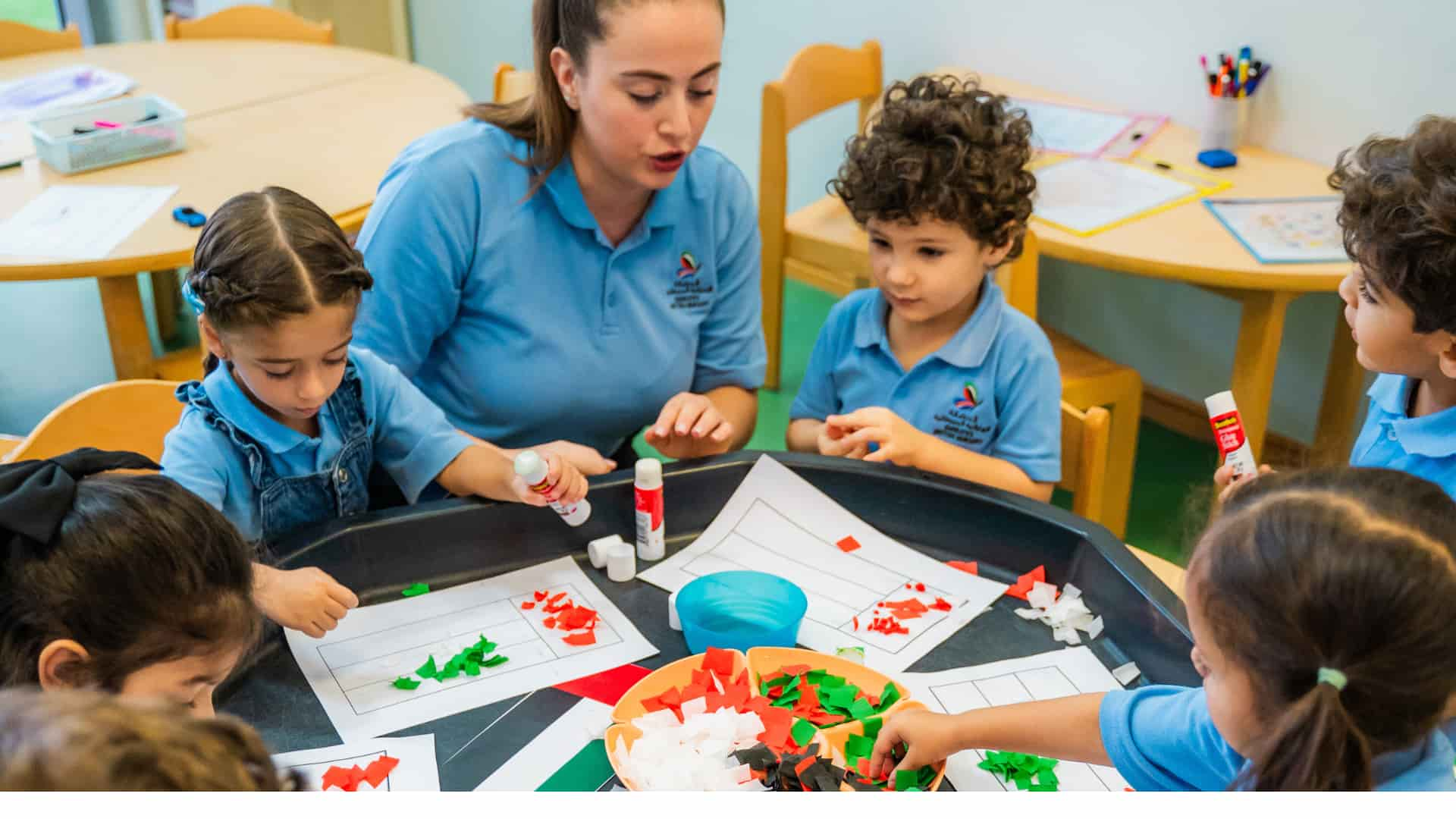Children are not born knowing how to manage their emotions or express frustration calmly. When they act out, it’s often their way of communicating a need they cannot yet express in words. Understanding how to handle children’s bad behaviour requires patience, empathy, and a gentle approach that nurtures rather than punishes.
At Emirates British Nursery, every moment of misbehaviour is seen as an opportunity to teach, connect, and guide. Let’s explore how parents and educators can turn challenging behaviours into meaningful learning experiences through kindness and consistency.
Understanding the Roots of Bad Behaviour in Preschoolers
Before reacting to unwanted behaviour, it’s important to understand why it happens. Preschoolers are still developing emotional control and social understanding (Harvard). Their brains are learning to:
- manage big feelings
- follow routines
- navigate relationships
Common causes of challenging behaviour include:
- Developmental needs: limited communication skills, difficulty sharing
- Emotional triggers: frustration, tiredness, overstimulation
- Environmental factors: changes in routine, new surroundings, reduced attention
Recognising these factors helps adults respond with empathy rather than frustration. By observing closely, we can address the root cause rather than the surface behaviour.
Gentle Strategies to Handle Children’s Bad Behaviour
Gentle discipline doesn’t mean letting things slide—it means guiding children firmly but kindly. Here are effective strategies:
Positive Reinforcement and Reward Systems
Children respond beautifully to praise and encouragement. Focus on what they do right rather than what they do wrong. Simple reward systems—stickers, high-fives, or extra story time—motivate good behaviour without fear or pressure.
Modelling Good Behaviour
Children mirror adults. When we speak calmly, share kindly, and show patience, they naturally begin to copy these behaviours. Modelling teaches more effectively than instructions alone.
Consistent Routines and Boundaries
Predictability helps children feel safe. Consistent routines help them understand expectations, while clear boundaries teach responsibility and self-discipline.
Redirecting Unwanted Behaviour Creatively
Rather than repeating “no,” gently guide children toward a positive activity. For example, if they are restless or upset, redirect them to art activities for preschoolers where they can express emotions freely. Creative redirection helps release energy in a healthy way.
Using Calm, Clear Communication
A calm tone and simple words work best. Get down to the child’s eye level and explain what went wrong and how to make it better. This builds understanding and trust.
Involving Children in Art and Craft Activities
Creativity is a natural emotional outlet. Art and craft activities for preschoolers allow children to express anger, sadness, or excitement safely. Drawing, painting, or crafting gives them control and improves focus and patience.
Incorporating Creative and Space Art Activities to Support Behaviour
Art isn’t just fun—it’s therapeutic. Creative projects and space art activities help children learn cooperation, attention, and emotional regulation. These hands-on experiences channel curiosity and imagination, reducing frustration and impulsive behaviour.
When children are engaged in creating, they practise waiting, sharing, and completing tasks. These experiences develop responsibility and teamwork—important foundations for positive behaviour at home and school.
Tips for Parents and Educators
Gentle behaviour management works best when families and teachers collaborate.
- Be patient and consistent: Predictability helps children thrive.
- Recognise triggers early: Spotting signs of distress helps prevent escalation.
- Encourage open dialogue: Listen when children express feelings, even if they struggle with words.
- Promote teamwork: Consistent guidance between home and school supports emotional development.
Why Choose Emirates British Nursery
At Emirates British Nursery, we believe every child deserves understanding, respect, and gentle guidance. Our certified, trained educators use positive behaviour strategies focused on empathy, communication, and emotional growth.
We integrate creativity into daily routines, offering a nurturing space where children explore emotions through play and art. Our calm, structured environment helps children feel secure and confident as they learn to make good choices.
To Sum Up
Handling bad behaviour gently doesn’t just stop the problem—it builds the foundation for lifelong emotional well-being. By combining understanding with positive reinforcement and creativity, we teach children how to manage emotions, communicate kindly, and build confidence.
When children feel heard, respected, and guided with care, they don’t just behave better—they grow happier and more self-assured.
Frequently Asked Questions (FAQs)
- What is the best way to respond to tantrums at home?
Stay calm and patient. Allow the child space to express emotions, then talk once they have calmed down. Offer comfort and discuss what they can do differently next time. - Are gentle discipline strategies effective for all children?
Yes, though results may vary. Gentle methods work best when applied consistently, with clear boundaries and emotional support tailored to each child. - Can art and craft activities for preschoolers help with behaviour management?
Absolutely. Creative tasks encourage self-expression, patience, and focus—helping children manage frustration and channel their energy into positive outlets.
This blog was written by a third party




